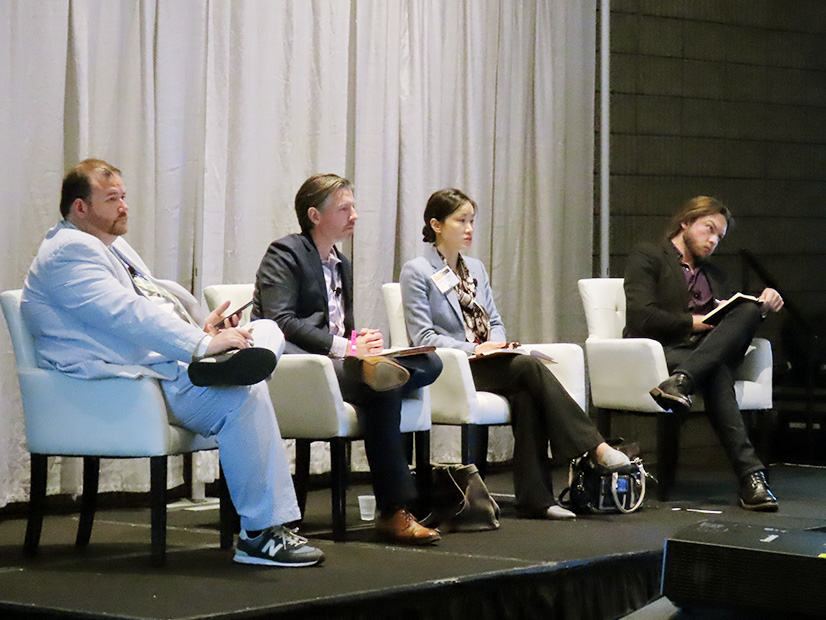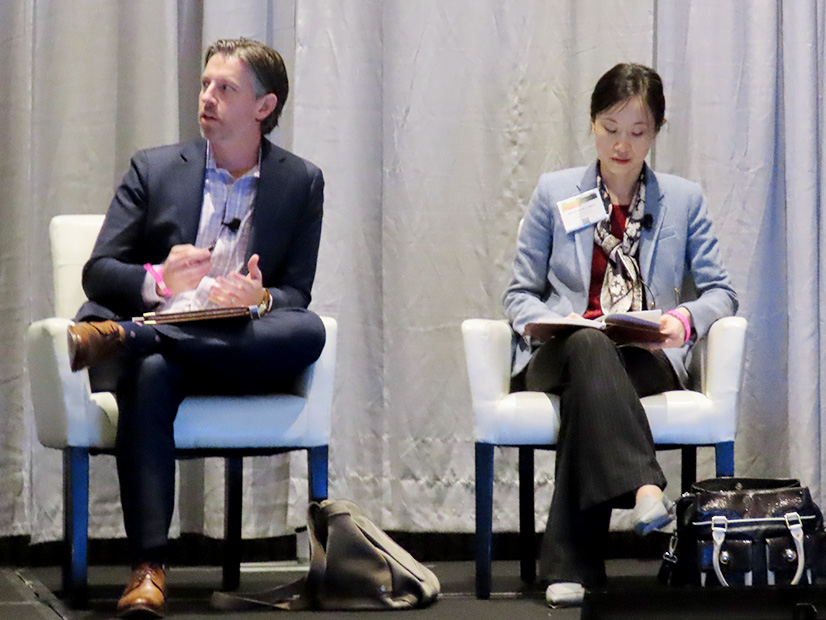
ATLANTA — Participants in the Smart Electric Power Alliance’s Solar and Energy Storage Southeast conference on Monday described the proposed Southeast Energy Exchange Market (SEEM) as an important first step in an ongoing conversation on alternative market structures in the Southeast.
“I certainly don’t think that this is the end of a process,” Chris Demko, associate general counsel for Southern Co., told the “Market Reform in the Southeast” panel. “It is supposed to be a sort of demonstration of innovation that we’re looking to see. If there’s value there [in other regions], how can we import that without all of the headaches?”
SEEM is intended to reduce trading friction across 11 Southeastern states by introducing automation, eliminating transmission rate pancaking, and allowing 15-minute energy transactions. Proponents, who comprise more than a dozen utilities and cooperatives in the Southeast, including Duke Energy and Southern, also claim it will promote the integration of renewable generation resources like wind and solar.
 Chris Demko of Southern Co. and Jennifer Chen of CO2efficient | © RTO Insider LLC
Chris Demko of Southern Co. and Jennifer Chen of CO2efficient | © RTO Insider LLCThese promises have been disputed by some stakeholders, such as the American Council on Renewable Energy (ACORE), which published a report last month suggesting that other models surpassed SEEM’s purported benefits. (See Report: SEEM’s Benefits Beaten by Other Models.) An alliance of environmental groups has repeatedly pressed FERC to reject the proposal in favor of a technical conference on other potential market structures (ER21-1111, et al.), and several North Carolina lawmakers wrote the commission in August supporting this idea. (See NC Legislators Join Call for Southeast Technical Conference.)
Participants in Monday’s panel did not go that far, but several speakers emphasized that SEEM is not the only possible model for improving trading efficiency and promoting the adoption of renewable resources. Jennifer Chen, senior policy counsel at clean energy consultancy CO2efficient, pointed out alternative governance models that ACORE and others have suggested, as well as specific policies found in other regions that might be used in the Southeast.
“There are good practices that we can leverage from each of these regions,” Chen said. “For example … PJM’s tariff itself funds the consumer advocates in PJM states and enables consumer advocates to hire an executive director, hire consults, perform studies, [and] travel to meetings. … There are differences across the regions that we can leverage in terms of best practices for governance.”
Demko emphasized that while other governance models deserve consideration, regulators should not focus on the imperfections of the current proposal and potentially lose the opportunity for at least a partial improvement.
“This is a real option that can be delivered within a year, provided FERC accepts it,” Demko said. “This is something that is real and achievable; it’s not a hypothetical proposal and wouldn’t require scrapping the existing market that is delivering some of the most reliable electricity in the country.”
Joshua Brooks, co-founder and CEO of consultancy Brooksform, suggested that SEEM and other proposed market reorganizations are ultimately “trying to come up with business models that are more closely mapped to the physics of how electricity works,” which could prove useful to market design in general. But the underlying benefit of SEEM or any other structure is the opportunity to push a historically change-averse region toward accepting that new ideas don’t need to be feared.
“It’s the Southeast, right? They are going to have to get familiar with the idea of … just changing something a little bit,” Brooks said. “And what the outcome is may not be technologically related to it at all. I think [SEEM] would be really interesting to look at and study, same with the Southern [energy imbalance market].”
Brooks said he’s seen a “reticence to change” over the 12 years that he’s been engaged in policy regulatory discussions in the region.
“So I think the folks who would make the decision aren’t even looking at it as a technical jump … [it’s a way to] be familiar with the process and see where they could jump in on the next piece.”


